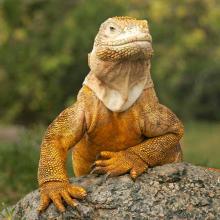Teratoscincus scincus
Common name:
Frog-eyed gecko
Suborder:
Gekkota
Order:
Squamata
Class:
Reptilia
Naja oxiana
Common name:
Caspian cobra
Suborder:
Serpentes
Order:
Squamata
Class:
Reptilia
Varanus griseus
Common name:
Monitor lizard
Suborder:
Autarchoglossa
Order:
Squamata
Class:
Reptilia
Conolophus subcristatus
Common name:
Galapagos land iguana
Suborder:
Iguania
Order:
Squamata
Class:
Reptilia
Teratoscincus scincus
Common name:
Frog-eyed gecko
Suborder:
Gekkota
Order:
Squamata
Class:
Reptilia
Naja oxiana
Common name:
Caspian cobra
Suborder:
Serpentes
Order:
Squamata
Class:
Reptilia
Varanus griseus
Common name:
Monitor lizard
Suborder:
Autarchoglossa
Order:
Squamata
Class:
Reptilia
Conolophus subcristatus
Common name:
Galapagos land iguana
Suborder:
Iguania
Order:
Squamata
Class:
Reptilia
Teratoscincus scincus
Common name:
Frog-eyed gecko
Suborder:
Gekkota
Order:
Squamata
Class:
Reptilia
Naja oxiana
Common name:
Caspian cobra
Suborder:
Serpentes
Order:
Squamata
Class:
Reptilia
Varanus griseus
Common name:
Monitor lizard
Suborder:
Autarchoglossa
Order:
Squamata
Class:
Reptilia
Conolophus subcristatus
Common name:
Galapagos land iguana
Suborder:
Iguania
Order:
Squamata
Class:
Reptilia
Order-Animalia: Squamata
Squamata is the largest order of reptiles, comprising lizards, snakes and amphisbaenians (worm lizards), which are collectively known as squamates or scaled reptiles. With over 10,000 species, it is also the second-largest order of extant (living) vertebrates, after the perciform fish. Members of the order are distinguished by their skins, which bear horny scales or shields. They also possess movable quadrate bones, making it possible to move the upper jaw relative to the neurocranium. This is particularly visible in snakes, which are able to open their mouths very wide to accommodate comparatively large prey. Squamata is the most variably sized order of reptiles, ranging from the 16 mm (0.63 in) dwarf gecko (Sphaerodactylus ariasae) to the 5.21 m (17.1 ft) green anaconda (Eunectes murinus) and the now-extinct mosasaurs, which reached lengths of over 14 m (46 ft).
Among other reptiles, squamates are most closely related to the tuatara, which superficially resembles lizards.
Reference: Wikipedia




